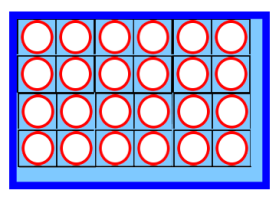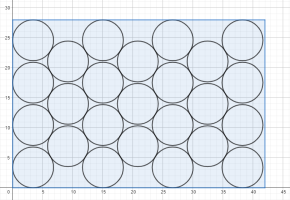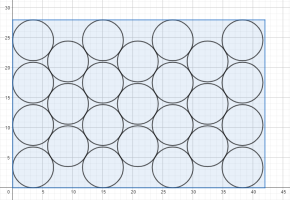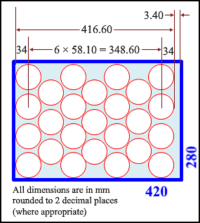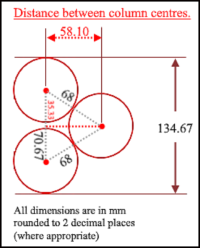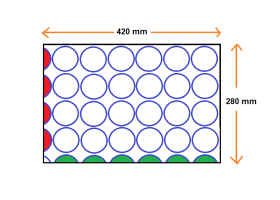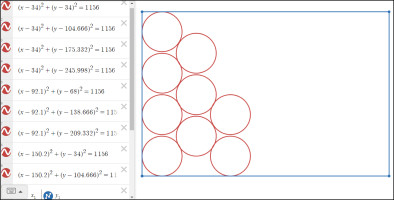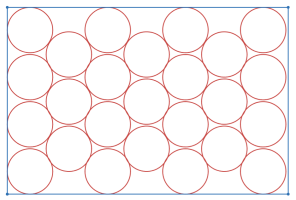This glass has vertical sides. The diameter of its base is 68 mm. How many of these glasses will fit of this rectangular tray (28 cm × 42 cm)?
Thank you in advance for your help.
The correct answer is 24 glasses.
Why can't we do the following?
Area of the tray = 28 × 42 =1176 cm2.
Area of the base= pi x r x r = 36.29 cm2
1176/36.29= 32.40.
I saw in my son's year 6 practice book. I know the correct answer is 24 but I still don't know why not 32.40.
Thank you in advance for your help.
The correct answer is 24 glasses.
Why can't we do the following?
Area of the tray = 28 × 42 =1176 cm2.
Area of the base= pi x r x r = 36.29 cm2
1176/36.29= 32.40.
I saw in my son's year 6 practice book. I know the correct answer is 24 but I still don't know why not 32.40.

